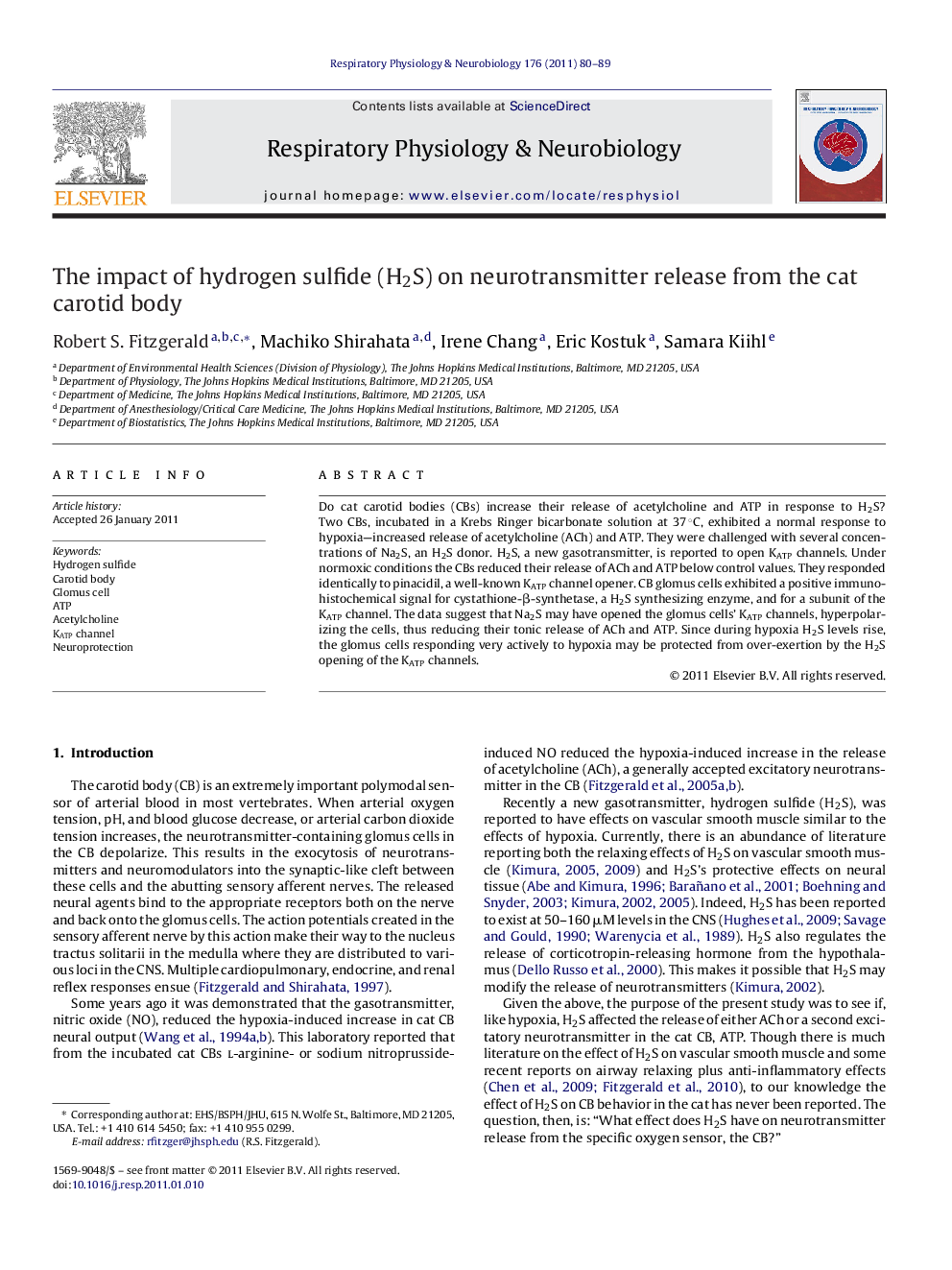| Article ID | Journal | Published Year | Pages | File Type |
|---|---|---|---|---|
| 2847459 | Respiratory Physiology & Neurobiology | 2011 | 10 Pages |
Do cat carotid bodies (CBs) increase their release of acetylcholine and ATP in response to H2S? Two CBs, incubated in a Krebs Ringer bicarbonate solution at 37 °C, exhibited a normal response to hypoxia—increased release of acetylcholine (ACh) and ATP. They were challenged with several concentrations of Na2S, an H2S donor. H2S, a new gasotransmitter, is reported to open KATP channels. Under normoxic conditions the CBs reduced their release of ACh and ATP below control values. They responded identically to pinacidil, a well-known KATP channel opener. CB glomus cells exhibited a positive immunohistochemical signal for cystathione-β-synthetase, a H2S synthesizing enzyme, and for a subunit of the KATP channel. The data suggest that Na2S may have opened the glomus cells’ KATP channels, hyperpolarizing the cells, thus reducing their tonic release of ACh and ATP. Since during hypoxia H2S levels rise, the glomus cells responding very actively to hypoxia may be protected from over-exertion by the H2S opening of the KATP channels.
